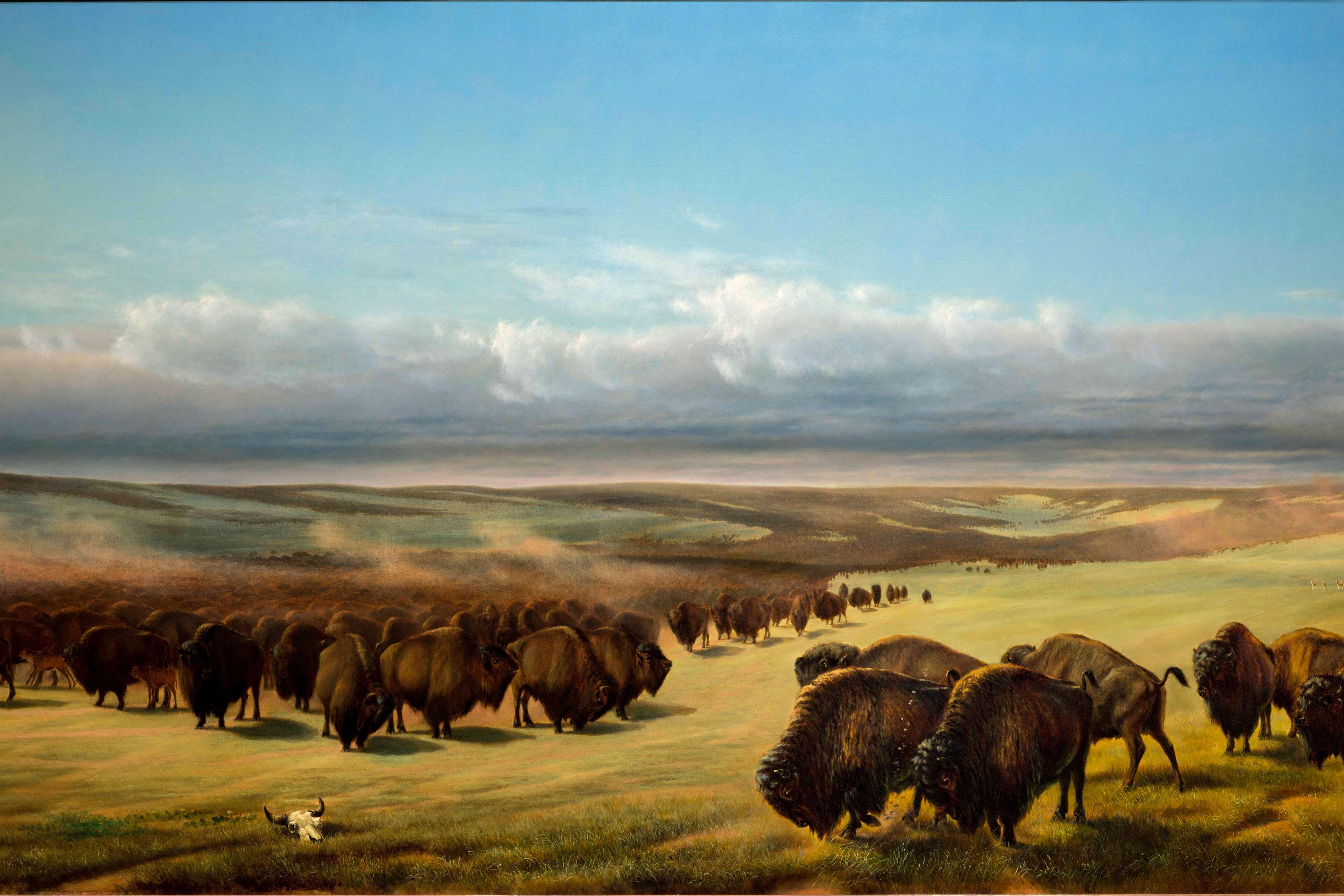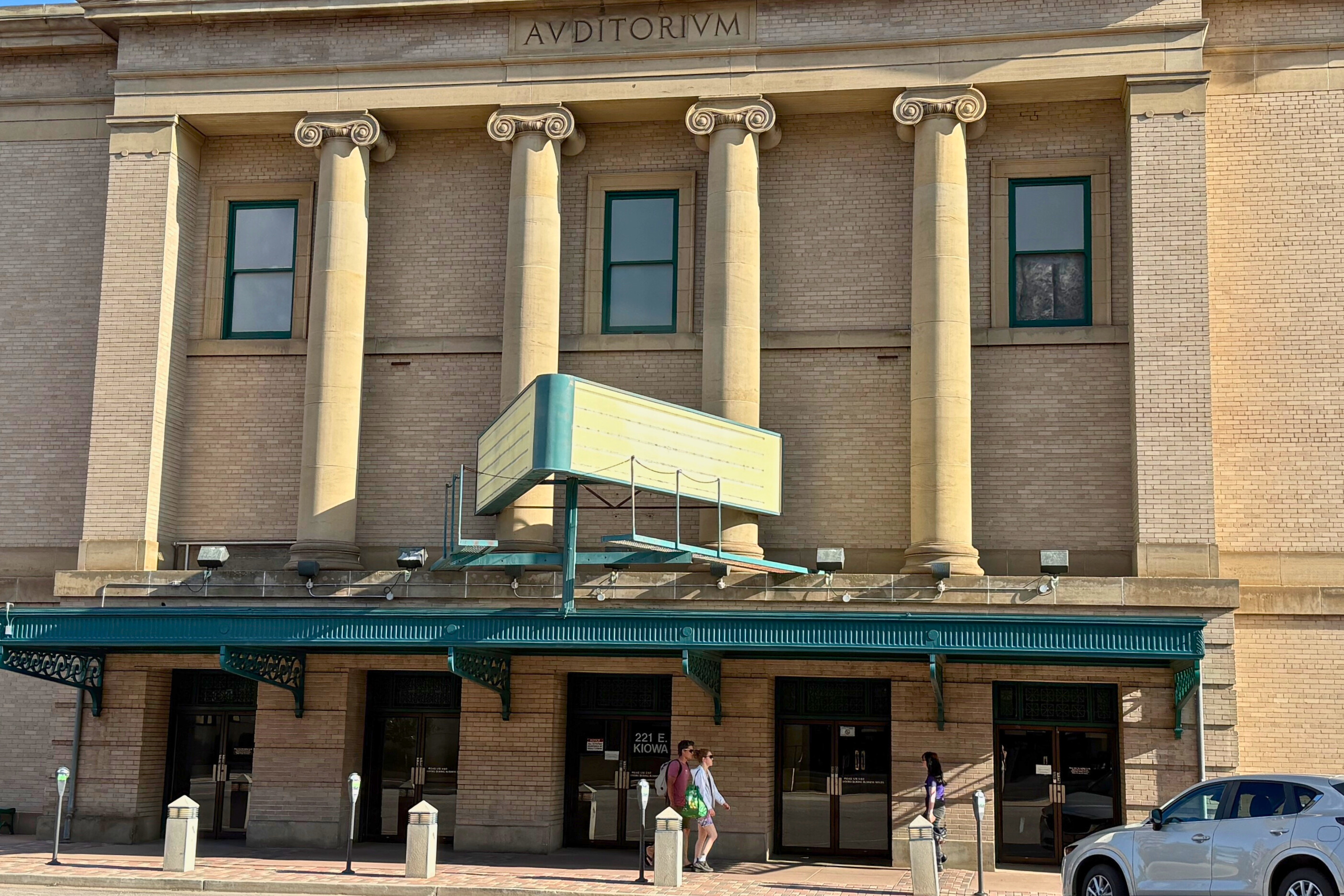

Colorado has one of the most dramatic skies in the country. Summers see towering thunderheads thanks to the mountains and winter winds can whip clouds into flying saucers.
That atmospheric grandeur is why the Cloud Atlas Project wants more of us to turn our eyes skyward, snap photos of the clouds and then share those images on social media. Instead of an Instagram of your latest farm-to-table meal, why not a cloud?
If you’re already sharing clouds — or maybe you want to start — the Cloud Atlas Project, an effort of the nonprofit Rocky Mountain Land Library, wants to get you into Denver’s American Museum of Western Art for special tours through their permanent collection to explore how clouds have evolved over time in art.
“For me, the goal of the Cloud Atlas Project is really to connect people to nature in this concrete jungle that we live in that it is accessible to everyone,” says Eileen Roscina Richardson, a filmmaker and artist on the library’s board.
Richardson, who’s a Denver native, says she takes cloud photos nearly every day for her personal enjoyment and to feed the Cloud Atlas Project Instagram. Both her and fellow library board member Ben Sherrill have a passion for clouds.
Sherrill explains The Cloud Atlas Project, which launched in the summer of 2017 with an exhibition at the RedLine gallery, is a way to expand what the Rocky Mountain Land Library has to offer. The short-term goal is to get people from all over the nation to share cloud images on the Instagram feed. He’d like to move the project beyond photos, to include poetry, drawings, and maybe even science projects.
Sherrill eventually wants to curate some of these shared experiences into a book, partner with the Regional Transportation District to have cloud spotter kiosks at bus and light rail stations and much more. So, why clouds?
“It’s a very democratic thing that you can experience anywhere,” Sherrill says about clouds. “You can look up in the city, in the country, inside buildings, outside and anybody can appreciate them.”
Clouds Through Art
Western paintings with gilded frames hang from floor to ceiling on every floor of the American Museum of Western Art in downtown Denver.
Their collection begins with 19th century artists like Thomas Moran, who’s known for his paintings from the Yellowstone region which eventually helped convince Congress to create Yellowstone National Park. The collection gets more modern ending with the likes of Maynard Dixon and Ed Mell.

Many of these paintings, like Moran’s Children of the Mountain or Dixon’s Desert Journey, have dramatic cloudscapes and weather that evoke strong emotions. This will be the focus of two tours that Colleen Sullivan, the museum’s program and marketing director, will lead.
She plans to talk through the Chinese influence in some of the gallery’s pieces that follow a tradition that clouds are never painted alone in the sky. Clouds are meant to shroud rocks and trees to evoke meaning from a landscape. This is something that shows up in some of Moran’s paintings.
She’ll also explain how landscape artists departed from the Baroque and Renaissance periods by keeping angels and biblical scenes out of their work. Instead, she says painters “started to take those beautiful depictions of clouds that we see and maybe delete or remove the angels.” But they kept beams of sunlight breaking through clouds — a reference to heaven or the divine.
Art And Science Collide
The 1800s was an important time for clouds because that’s when art and science came together to give clouds names. British amateur meteorologist and artist Luke Howard came up with a classification system that centers around three Latin terms cirrus, cumulus and stratus. Today there are many, many cloud types and names but Howard’s system lives on.
You can see his influence at the American Museum of Western Art. This was a time when artists got honest about how they represented clouds in their work.

“The artists were now actually observing and painting an accurate depiction of clouds instead of putting a big white fluffy cloud in some place that would not really happen very often,” Sullivan says.
Artists also began reflecting the reality of weather. Maynard Dixon’s Desert Journey with its ominous thunderclouds dominating red rock country is “almost a warning sign from Dixon himself of ‘if you go out into this landscape it’s harsh and at any moment weather can hit.’”
Clouds can help give art emotion, something that can be elusive in a two dimensional landscape. And let’s face it, clouds and their shadows transport us and spark our imaginations. Richardson says she hopes the Cloud Atlas Project will do this and encourage people to share their own photos, art and writing with the Rocky Mountain Land Library.
“Cloud spotting justifies doing nothing which is one of my favorite things about it,” Richardson says.
By looking up she hopes people will find the joy that comes with slowing down.
The “Cloudscape: Tracing the Evolution of Clouds in Art” tours at the American Museum of Western Art take place Feb. 9 and 23, 2018









